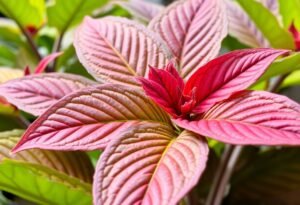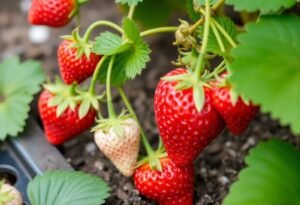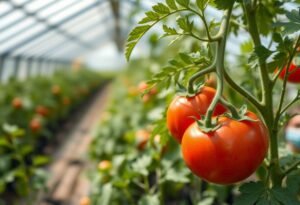Watermelon Varieties for Polish Cultivation
The watermelons we can grow in Poland can be divided into several varieties. Common to them is that they are mostly early-season varieties that require less time to grow. Sugar Baby variety, for instance, is one of the most popular choices as its fruits are not only tasty but also relatively small, making them ideal for small gardens. Other interesting varieties include Crimson Sweet and Charleston Gray, which are known for their high resistance to diseases. Choosing the right variety is the first step towards a successful harvest.
Choosing the Right Spot in Your Garden
Watermelons require a lot of sun and warmth, so choosing the right spot in the garden is crucial. Ideally, our watermelon patch should be located in a sunny area with good air circulation. However, we shouldn’t forget about the soil – it should be well-drained, nutrient-rich, and slightly acidic. A diverse range of microelements in the soil supports healthy plant growth, which translates to juiciness and flavor of the fruits.
Preparing the Soil for Watermelon Cultivation
Preparing the soil is yet another vital element. First, it’s a good idea to enrich the soil with compost or manure to provide the plants with essential nutrients. Next, use a sharp tool to loosen the soil to improve its drainage. It is also advisable to prepare raised beds, which enhance drainage and promote soil warming.
Sowing Seeds and Care
In Poland, it is recommended to sow seeds in late May, when the risk of frost has passed. Watermelon seeds can be planted directly in the ground, but it’s often better to start seedlings in pots indoors. After about 3-4 weeks, the seedlings should be ready for transplanting. Regular watering is crucial as watermelons have a high demand for water.
Protection Against Diseases and Pests
In watermelon cultivation, protection against diseases and pests plays a significant role that can thwart our efforts. Regular plant inspections, using natural protection methods, and organic fertilization will help keep the plants healthy. Remember to avoid artificial pesticides, which can be harmful to both plants and our health.
Harvesting and Storing Watermelons
Watermelon harvests in Poland usually take place in August and September. Important indicators of fruit ripeness are the yellowish spots under the fruit and the sound they make when tapped – it should sound hollow. After harvesting, watermelons should be stored in a cool place to maintain freshness and juiciness. Proper storage conditions prolong their shelf life and taste, allowing us to enjoy them even into late autumn.
Conclusion
Growing watermelons in Poland, while challenging, is possible and brings immense satisfaction. We encourage you to try your hand at cultivating these juicy fruits. Remember that the choice of variety, location, care, and protection is crucial for tasty yields. Don’t wait any longer – transform your garden into a paradise for watermelons!

















